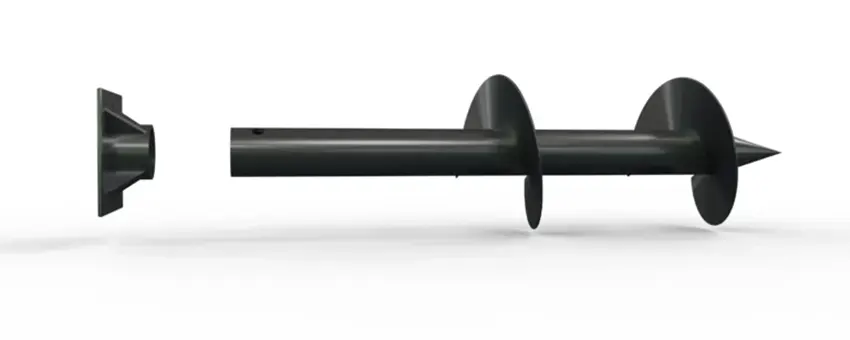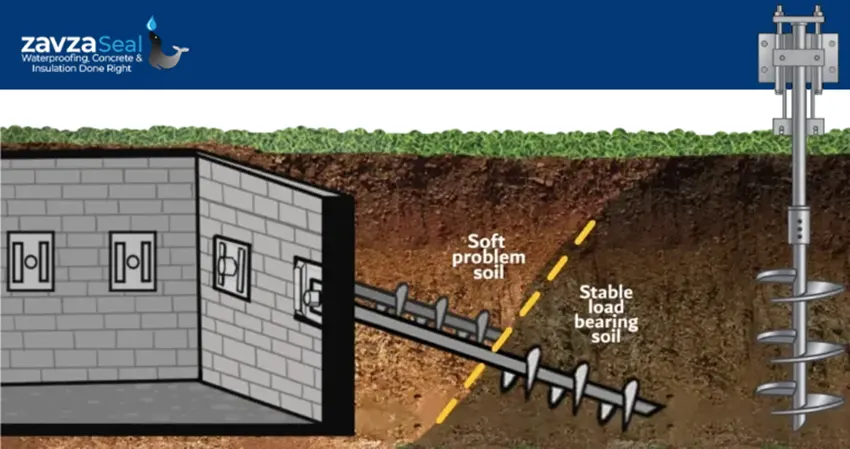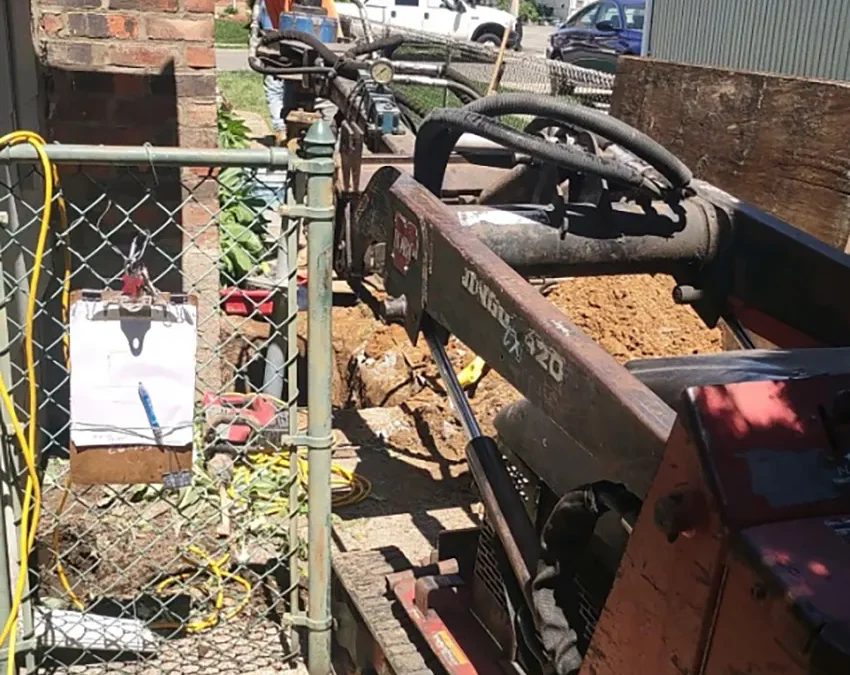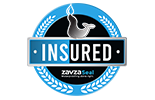Retaining walls across Long Island, Brooklyn, Queens, and the Bronx work overtime to hold back saturated soils, shifting grades, and coastal forces. But even the strongest walls can fail when lateral soil pressure spikes. Heavy rainfall, freeze–thaw cycles, and the high-clay and fill soils common in New York neighborhoods trap water. That added weight pushes against the wall until it bows, cracks, or leans; all classic signs of structural stress.
In areas influenced by coastal tides or seasonal flooding, these problems only escalate. That’s why more engineers, builders, and property owners are turning to helical anchors for retaining walls. Also called tieback anchors, these systems are code-compliant, versatile, and designed to deliver immediate stabilization. Whether it’s preventing failure in an older wall or engineering support for new construction, helical anchors provide the long-lasting reinforcement New York retaining walls need.
Schedule Your Free Retaining Wall Inspection Today and Learn How Zavza Seal Can Design the Right Anchor System for Your Property

What Are Helical Anchors and Tieback Anchors?
Helical anchors are steel shafts with helical plates that screw into the soil to resist tension loads. A tieback anchor is simply a horizontal helical anchor installed through a retaining wall to counteract lateral soil pressure.
Unlike helical piers, which carry compression loads from buildings, anchors work in tension to stabilize walls. Installation involves coring a small hole, driving the anchor into competent soil at a 10–15° angle, monitoring torque to confirm strength, and securing it with a wall plate. Anchors are typically embedded at least five times the helix diameter beyond the failure plane for lasting performance. In many cases, they are the most efficient way to restore retaining wall stability without massive excavation.
Why Retaining Walls Fail in New York
Retaining wall problems in New York almost always come down to lateral earth pressure. When soils become saturated or expand, they exert a powerful sideways force called hydrostatic pressure that pushes walls until they bow, lean, or crack.
Regional conditions make matters worse. High water tables in Long Island, freeze–thaw cycles in Queens, poorly compacted fill soils in Brooklyn, and even surface loads like driveways or parked vehicles add constant stress. Coastal storms and tidal surges in the Bronx amplify those risks further.
Common warning signs include:
- Wall Bowing or Bulging Outward
- Horizontal or Stair-Step Cracking
- Leaning or Tipping Walls
- Water Seepage Through Block Joints
A failing retaining wall isn’t just cosmetic—it’s a safety hazard that lowers property value and can lead to collapse.
If You See These Bowing Wall Signs, Schedule an Inspection Immediately to Protect Your Home.

Benefits of Helical Tieback Anchors
The advantages of helical anchors over traditional systems are clear:
- Predictable Capacity: Engineered design ensures each anchor achieves a known load.
- All-Weather, Limited-Access Installation: Portable equipment works in tight basements and small yards.
- Minimal Excavation, No Spoils: Faster, cleaner installs than dead-man anchors or grouted tiebacks.
- Immediate Load Testing: Anchors are proof-tested on site—no waiting for concrete cure times.
- Durability and Corrosion Protection: Galvanized steel with ICC-ES approvals for long-term reliability.
- Cost-Effective: Small crews, reusable gear, and efficient installs keep costs lower.
- Versatility: Supports garden walls, parking structures, or bulkheads with capacities up to 150,000 lbs.
These benefits of tieback anchors make them the most dependable choice for long-lasting retaining wall support.
Applications of Helical Tiebacks
Helical anchors work across residential, commercial, and coastal settings in New York:
- Residential Retaining Walls: Stabilize leaning basement walls or landscape walls, even with limited exterior access.
- Commercial Projects: Reinforce parking structures, large excavations, and commercial building foundations.
- Marine & Coastal Structures: Tie back seawalls and bulkheads against tidal forces—proven in waterfront builds.
- Temporary Shoring: Provide safe excavation support at construction sites; a clean alternative to soil nails.
- Hybrid Systems: Combine with carbon fiber or wall plates for walls showing severe cracks or bowing.
From Long Island backyards to Brooklyn seawalls, tieback anchors in New York deliver stability wherever retaining walls face soil and water pressure. Add a downloadable checklist here so homeowners can see if their project qualifies.
Helical Anchors Installation Process
Installing helical tiebacks doesn’t have to mean disruption or mess. Our process is engineered to be precise, minimally invasive, and reliable—delivering wall stabilization that’s fast, clean, and built to last. From inspection through final testing, every step is designed for confidence and long-term performance.
Here are the steps in the helical anchor installation process:
- Site Assessment & Soil Analysis:
Our team inspects the wall’s condition, measures bowing, and evaluates soil bearing capacity. When needed, we partner with geotechnical engineers for full soil analysis. - Custom Engineering:
Each project is engineered for load demands. We calculate the number, length, angle, and spacing of anchors using bearing-capacity equations and torque-correlation methods. - Installation:
- Core a small hole through the wall (if interior access is required).
- Drive the helical anchor into competent soil at a set angle while monitoring torque.
- Secure and tension the wall plate to lock the wall in place.
- Load Testing & Finishing:
Anchors are proof-tested immediately. Tension is adjusted, plates are concealed, and backfill is replaced if needed. - Cleanup:
Because anchors require minimal excavation and produce no spoils, the site is left clean and tidy.

Why Choose Us for Helical Anchor Solutions
Choosing the right contractor for retaining wall stabilization isn’t just about products—it’s about trust, local know-how, and proven results. At Zavza Seal, we bring decades of experience, certified systems, and complete foundation services to every project, ensuring your retaining walls stay secure for the long haul.
- Local Expertise: We’ve stabilized walls across Long Island, Brooklyn, Queens, and the Bronx for decades, with a deep understanding of local soils and codes.
- Certified Products & Trained Installers: We use ICC-ES approved anchors manufactured with engineered helix geometry, installed by certified crews.
- Comprehensive Services: From drainage to waterproofing and structural repair, we offer full support beyond anchors alone.
- Sustainability & Quality: Where possible, we incorporate recycled steel and eco-friendly processes without compromising strength.
- Warranty & Financing: Every project comes with strong warranty terms and flexible financing to fit budgets.
Need Helical Anchors Installation in Long Island? Get Your Free Inspection Today!
Complementary Services
- Drainage & Waterproofing: French drains, sump pumps, and systems that keep soil from saturating.
- Foundation Repair: Helical piers, slab piers, and push piers for settling structures.
- Retaining Wall Construction: Design and build new retaining walls with anchors integrated from the start.
- Soil Stabilization & Grouting: Techniques like compaction grouting, polyurethane injections, and slope stabilization.
Bundling these services with retaining wall anchors ensures a complete, long-term solution.
Service Areas
We proudly serve:
- Long Island (Nassau & Suffolk Counties)
- Brooklyn
- Queens
- The Bronx
- Surrounding neighborhoods and waterfront properties
Need Helical Anchors for Retaining Walls in New York? Call the Retaining Wall Experts at Zavza Seal!
Helical anchors are the strongest, most reliable way to stabilize retaining walls in New York. Whether your wall is bowing, leaning, or at risk of collapse, Zavza Seal has the expertise, products, and warranties to deliver lasting results.
Get Your Free Retaining Wall Inspection Today. No Excavation. Fast Installation. Financing Available.
Frequently Asked Questions About Helical Anchors for Retaining Walls
What’s the difference between helical anchors, tiebacks, and piers?
Helical anchors and tiebacks resist tension loads, stabilizing retaining walls against lateral soil pressure. Helical piers resist compression loads, transferring building weight into stable soils. Each system addresses different structural needs. Schedule your free consultation today to see which solution is right for your property.
How long do helical anchors last?
Helical anchors are built to last decades. Galvanized steel and ICC-approved coatings provide strong corrosion resistance, even in harsh New York soils and coastal environments. With proper installation, service life can extend for generations. Schedule your free consultation today to learn about long-term anchor durability.
How many anchors does my wall need?
The number of helical anchors depends on wall height, soil type, and loading conditions. During design, engineers calculate capacity using torque and bearing equations to ensure stability. Every project receives a tailored plan. Schedule your free consultation today for an exact anchor count.
Can anchors be installed in winter?
Yes. Helical anchor installation is an all-weather process that requires no concrete curing. Anchors can be advanced into soil and load-tested even during freezing conditions, making them a year-round stabilization method. Schedule your free consultation today for winter retaining wall solutions.
Do you need to excavate?
In most cases, helical tiebacks require minimal or no excavation. Anchors can often be installed from inside basements or directly through existing retaining walls, avoiding disruption. This makes the process faster and cleaner than traditional methods. Schedule your free consultation today to confirm your options.
Are permits required?
Yes. Installing retaining wall anchors in New York requires permits, but we handle everything. Our team ensures compliance with local codes and building requirements across Long Island, Brooklyn, Queens, and the Bronx. Schedule your free consultation today to begin the process with confidence.
What does it cost?
The cost of helical anchors depends on factors such as wall size, soil conditions, and site access. Because no two walls are the same, pricing is determined after inspection. We provide free quotes and inspections to give homeowners exact costs. Schedule your free consultation today.








